Blue jays are familiar birds for many across the Eastern United States – so much so that some may assume they are looking at a jay when they are looking at different types of birds entirely.
What is a Blue Jay?
The Blue Jay, Cyanocitta cristata, is a passiform in the Corvidae family. This common songbird can be seen in many eastern and central US areas and south-eastern Canada.
Some migrate in great flocks along the Great Lakes and Atlantic coasts, but some are present throughout winter in all parts of their range.
Their appearance and song are familiar to many. But sometimes, lookalikes may trick you into thinking that you are looking at a blue jay when you are looking at a different bird.
Blue Jay Identification

- Length: 9.8-11.8 in (25-30 cm)
- Weight: 2.5-3.5 oz (70-100 g)
- Wingspan: 13.4-16.9 in (34-43 cm)
Blue jays are smaller than grows but larger than robins. They are white or grey underneath, with various shades of blue, back, and white on their upper portions.
These are birds of forest edges whose favorite food is acorns. One interesting fact about these birds is that they are credited with helping to spread oak trees after the last glacial period.
If you have an oak tree bearing acorns on your property, then blue jays are sure to be attracted to your space.
But even if you do not have space for oak, you might see them at tables or platform feeding stations in your garden.
Birds That Look Like Blue Jays
While blue jays are a familiar sight to many, there are some other birds with blue coloration or which resemble blue jays in some way.
So without looking too closely, you might misstep in bird identification if you are not careful.
Other Jays That Look Like Blue Jays
Many of the blue jay lookalikes are also jays. These jays are related to blue jays and can look similar – at least from a distance and without close observation.
But look more closely, and you will see that there are still ways to tell these birds apart.
California Scrub-Jay
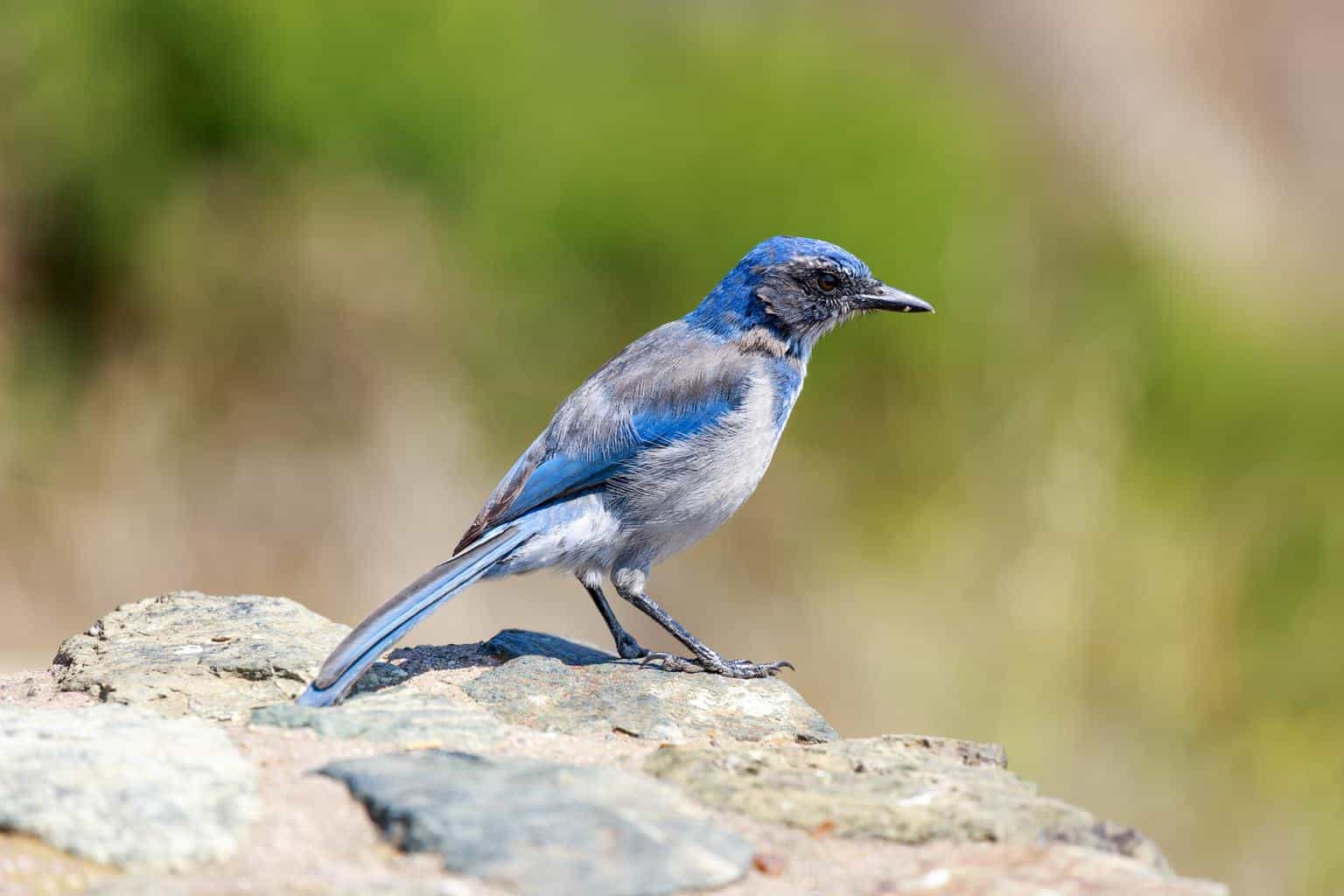
- Length: 11.0-11.8 in (28-30 cm)
- Weight: 2.5-3.5 oz (70-100 g)
- Wingspan: 15.3 in (39 cm)
California scrub jays are found only along the dry lowlands of the Pacific coastline.
They are found in dry shrublands, oak woodlands, and backyards from Washington state south to Baja California.
These birds are azure blue and gray on their upper parts and pale underneath, with a necklace of blue.
The blue kay has a blue crest and a black necklace that these birds do not. But remember, in any case, these do not occur in the same area, and their ranges do not overlap. So which one you will see will depend on your location.
Canada Jay
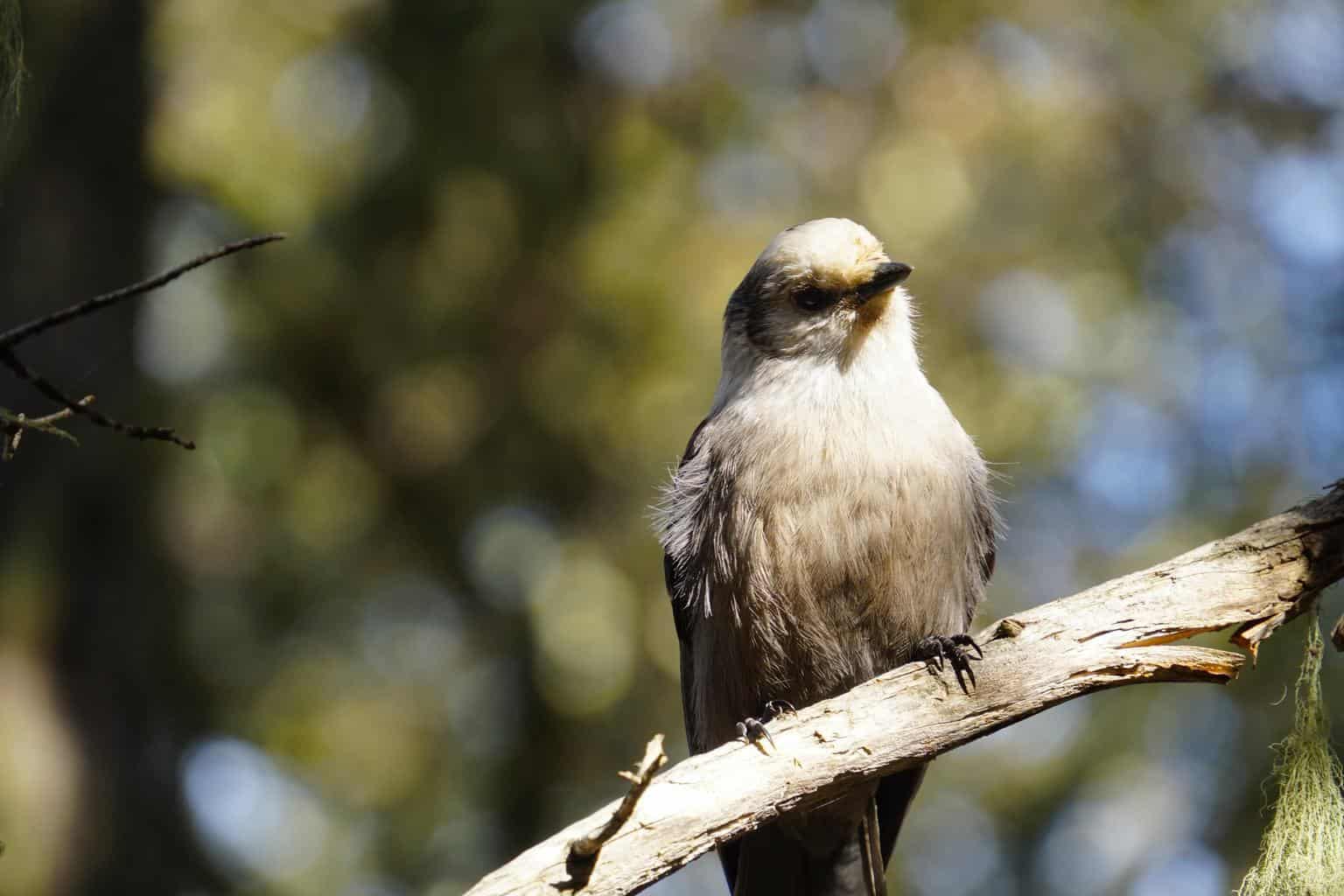
- Length: 25 to 33 cm (9.8 to 13.0 in)
- Weight: 65 to 70 g (2.3 to 2.5 oz)
- Wingspan: 45 cm (18 in)
The cute Canada Jay is found living in northern forests in Canada and portions of the northern US year-round and rearing chicks in the depths of winter.
These are dark grey above and light grey below, without the distinctive blue coloration of the blue jay. But it might be mistaken for one in low light levels.
Florida Scrub-Jay
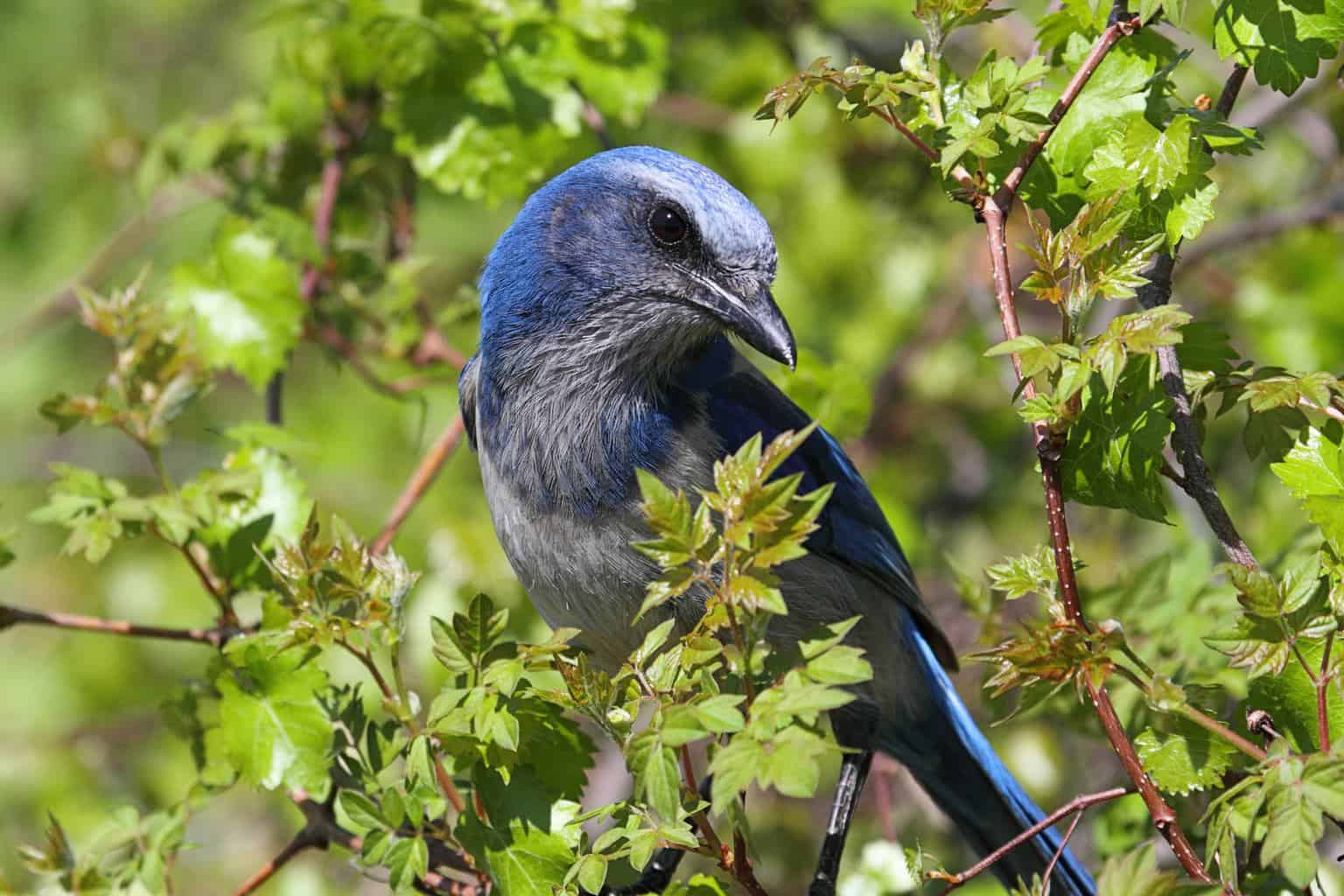
- Length: 9.1-11.0 in (23-28 cm)
- Weight: 2.3-3.3 oz (66-92 g)
- Wingspan: 13.0-14.2 in (33-36 cm)
The Florida scrub jay is the only bird that lives exclusively in Florida. It can be found in areas of low-growing scrub oak in sandy soils. It is an endangered species.
This bird is dull blue overall with a whitish forehead, pale grey back, and belly. Blue jays have a crest, while these birds do not.
Also, the Florida scrub jay has a gray back and plain wings, unlike the blue jay with its white wing bars.
Pinyon Jay
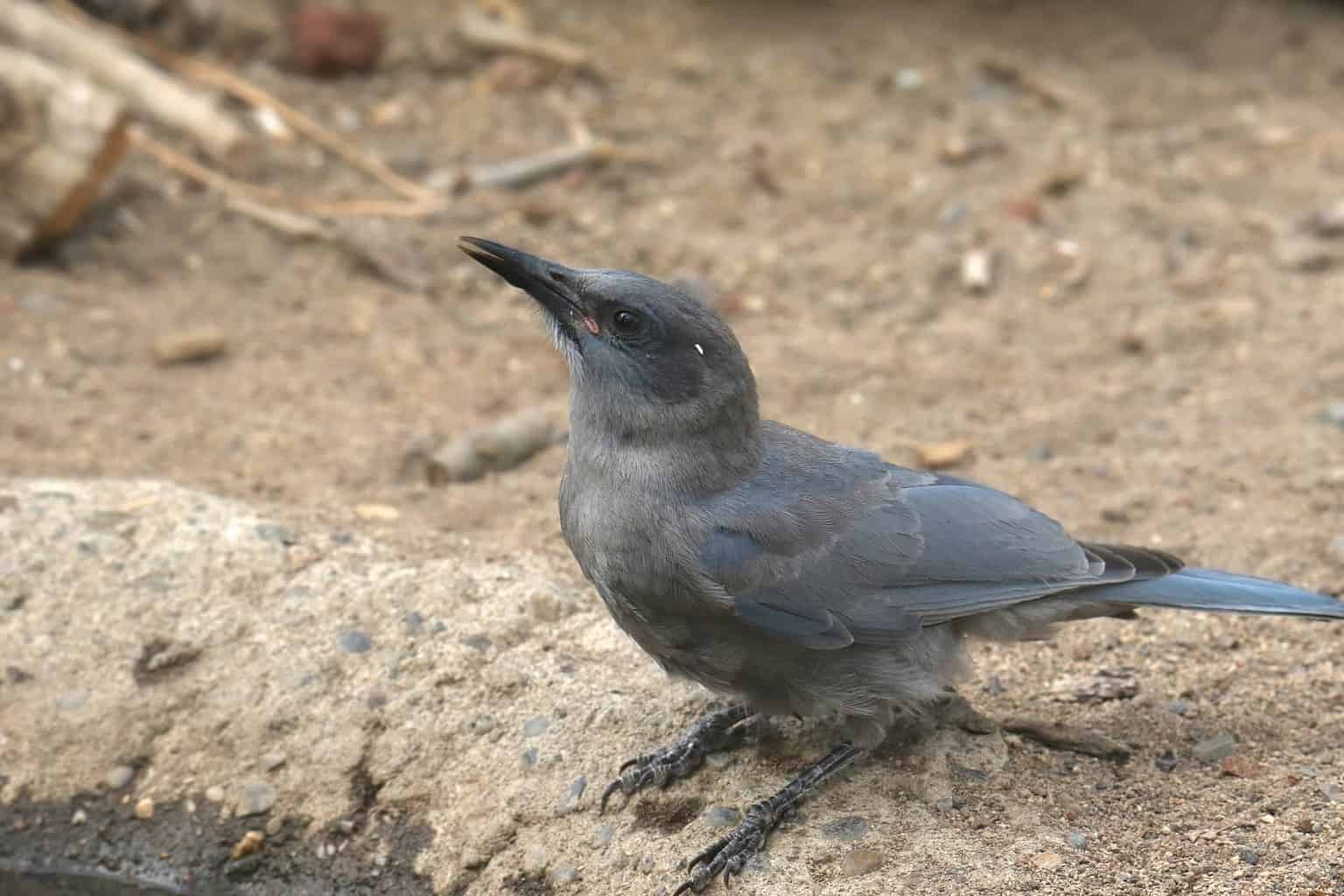
- Length: 10.2-11.4 in (26-29 cm)
- Weight: 3.2-4.2 oz (90-120 g)
- Wingspan: 18.1 in (46 cm)
The Pinyon Jay travels in large, noisy flocks in the pinyon-juniper, chaparral, and scrub-oak woodlands of the western United States.
Males and females are dusky blue, pale grayish-blue bellies and dusky white throats. Note that these differ in color and patination from blue jays.
Steller’s Jay
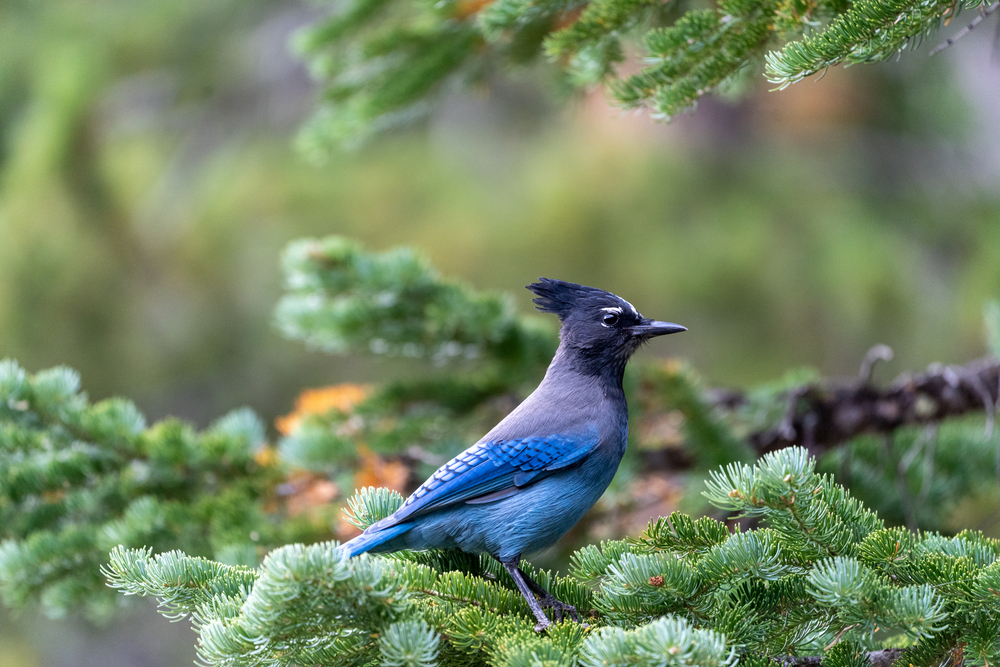
- Length: 11.8-13.4 in (30-34 cm)
- Weight: 3.5-4.9 oz (100-140 g)
- Wingspan: 17.3 in (44 cm)
This large, dark Jay is found in the forests of the mountainous west. They have charcoal blackheads and blue bodies, with a lighter blue on the wings.
There is little overlap between this jay and the blue jay. And note that blue jays have whitish underparts and a blue crest rather than a black one.
Woodhouse’s Scrub-Jay
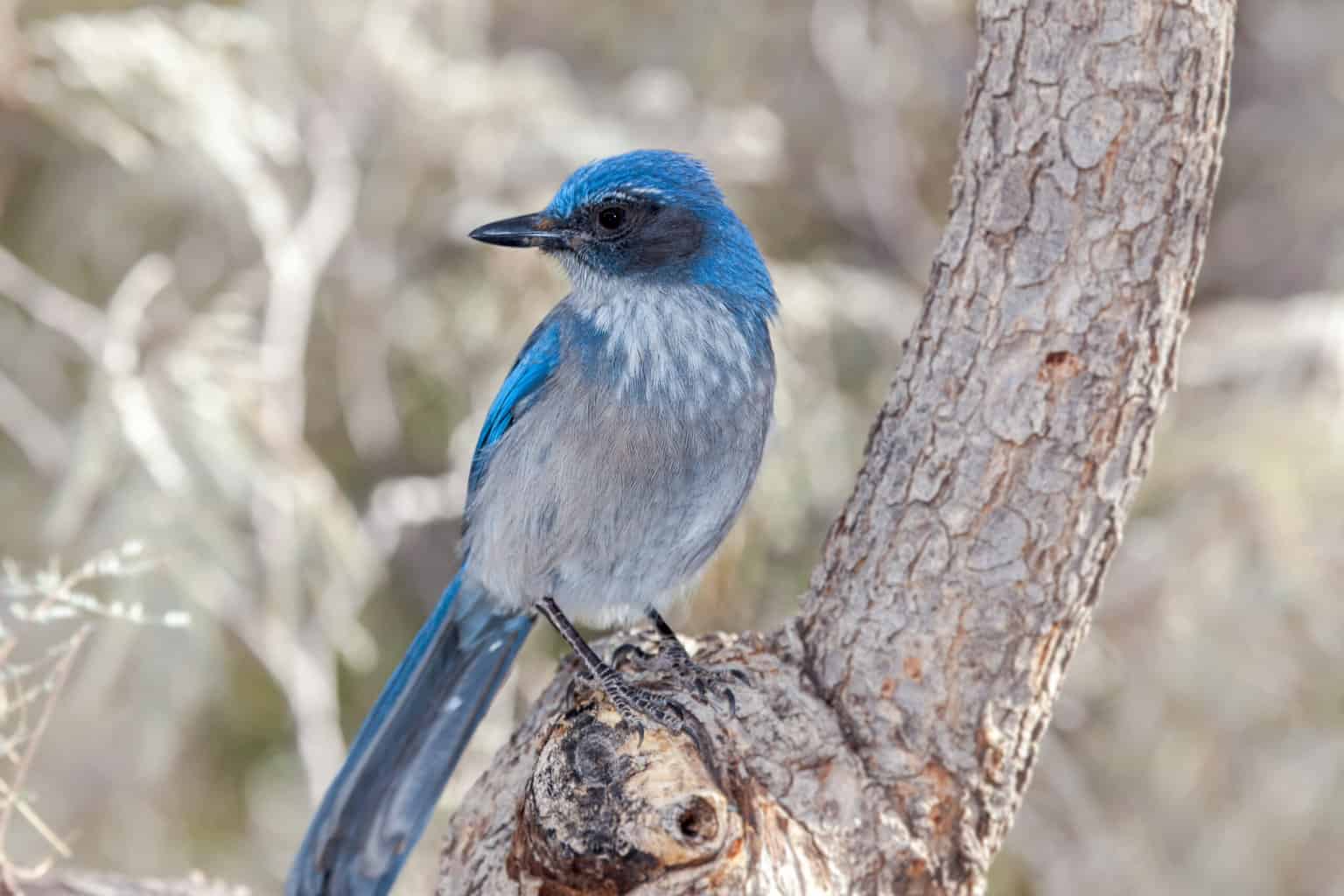
- Length: 11.0-11.8 in (28-30 cm)
- Weight: 2.5-3.5 oz (70-100 g)
- Wingspan: 15.3 in (39 cm)
This bird is found in dry lowlands from Nevada south to Mexico. It strongly resembles the California scrub jay but was named a separate species in 2016.
It is a slightly dimmer blue and dingier gray than this other jay, with almost no necklace and a straighter bill.
Remember, blue jays occur in the east, with blue crests and black necklaces that these jays do not have.
Other Birds That Look Like Blue Jays
Other birds with a blue hue may also be superficially similar to blue jays and may be mistaken for them when a flash of blue is seen in the undergrowth or out of your eye.
Black-Throated Blue Warbler
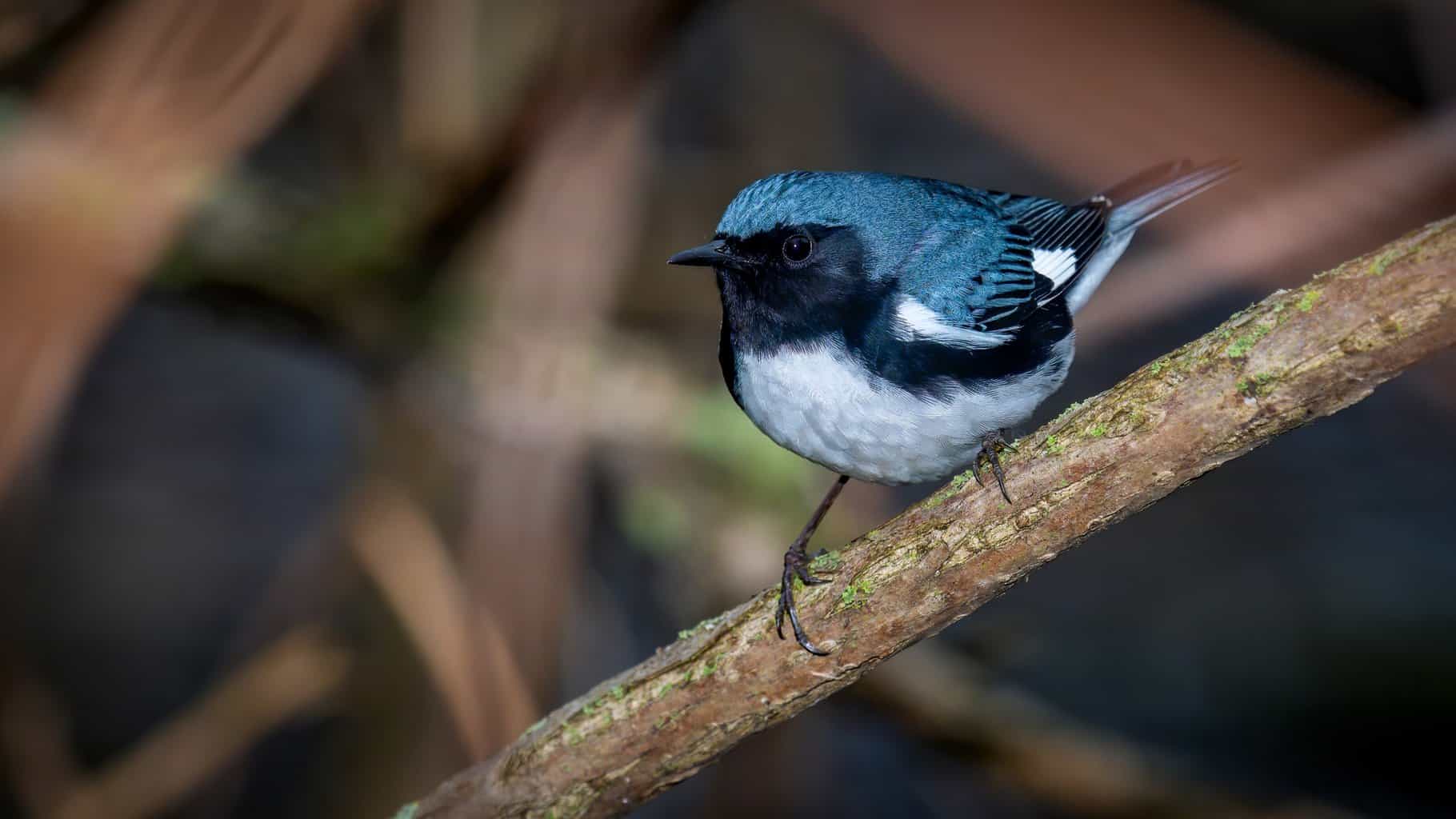
- Length: 4.3-5.1 in (11-13 cm)
- Weight: 0.3-0.4 oz (8-12 g)
- Wingspan: 7.5-7.9 in (19-20 cm)
Found migrating across the Eastern United States and breeding in Eastern hardwood forests, this species is aptly named, as the males have a midnight blue back, sharp white belly, and black throat.
The females, in contrast, are dull olive-brown but have unique white squares on their wings.
Note that while the males, like a blue jay, have blue, black, and white coloration, they are much smaller.
Blue Grosbeak

- Length: 5.9-6.3 in (15-16 cm)
- Weight: 0.9-1.1 oz (26-31 g)
- Wingspan: 11.0 in (28 cm)
The blue grosbeak breeds across much of the United States in summer, except the northwest, north, and north-easternmost areas, migrating south for winter, and these areas are widespread but not abundant.
Breeding males are easily distinguished, with a stunning brilliant blue hue and chestnut wing bars.
While blue is like a blue jay, the wing bars and several other differences make it fairly easy to tell these birds and blue jays apart.
Cerulean Warbler
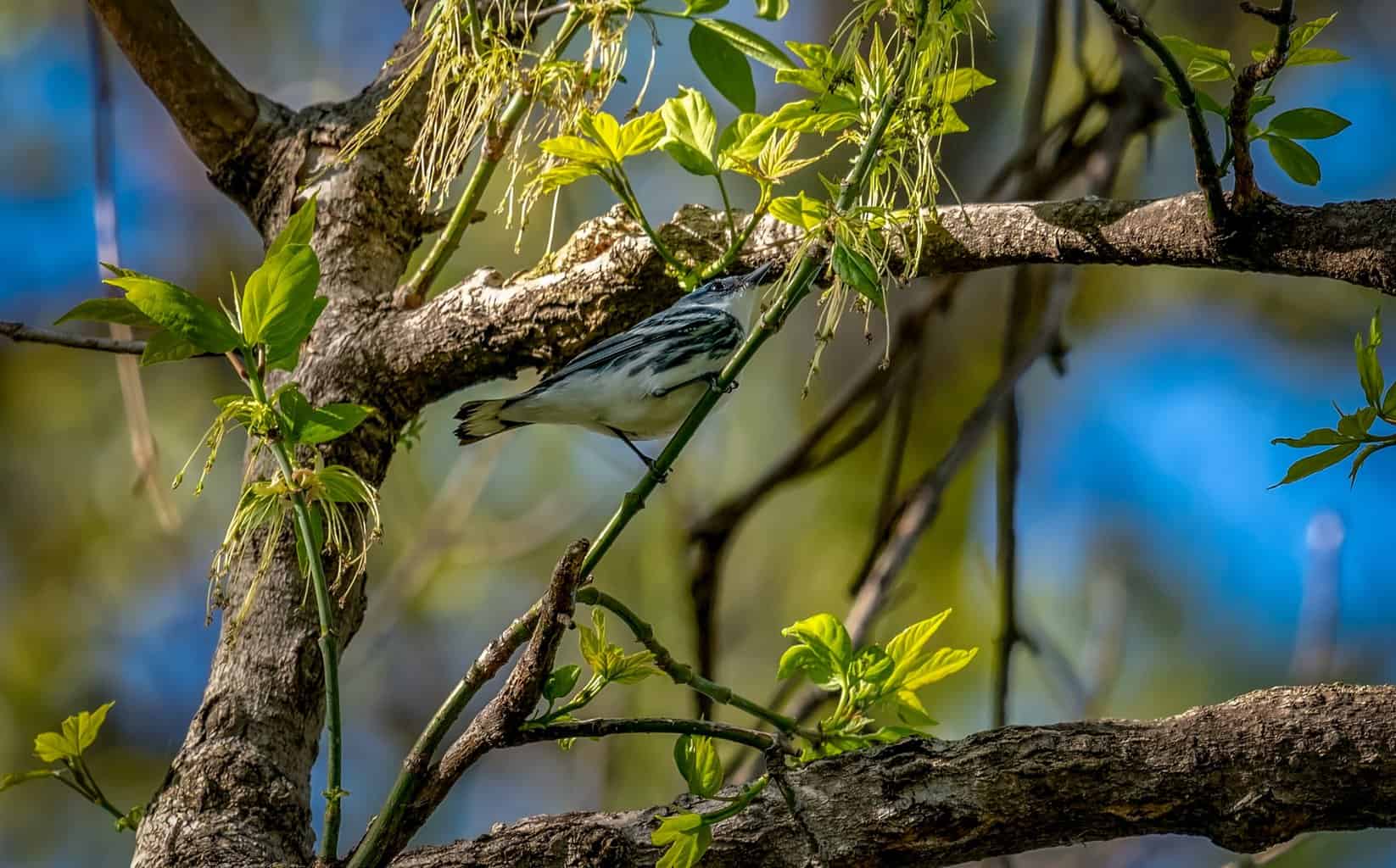
- Length: 4.3 in (11 cm)
- Weight: 0.3-0.3 oz (8-10 g)
- Wingspan: 7.9 in (20 cm)
Found in the eastern Forests, another small blue-hued bird is the Cerulean warbler. Males are brilliant blue with a cerulean neckband and side streaks.
The females are a dusky green hue.
Though it also has blue and white coloration, this is a much smaller bird than the blue jay, so it would usually be able to tell the two apart.
Indigo Bunting
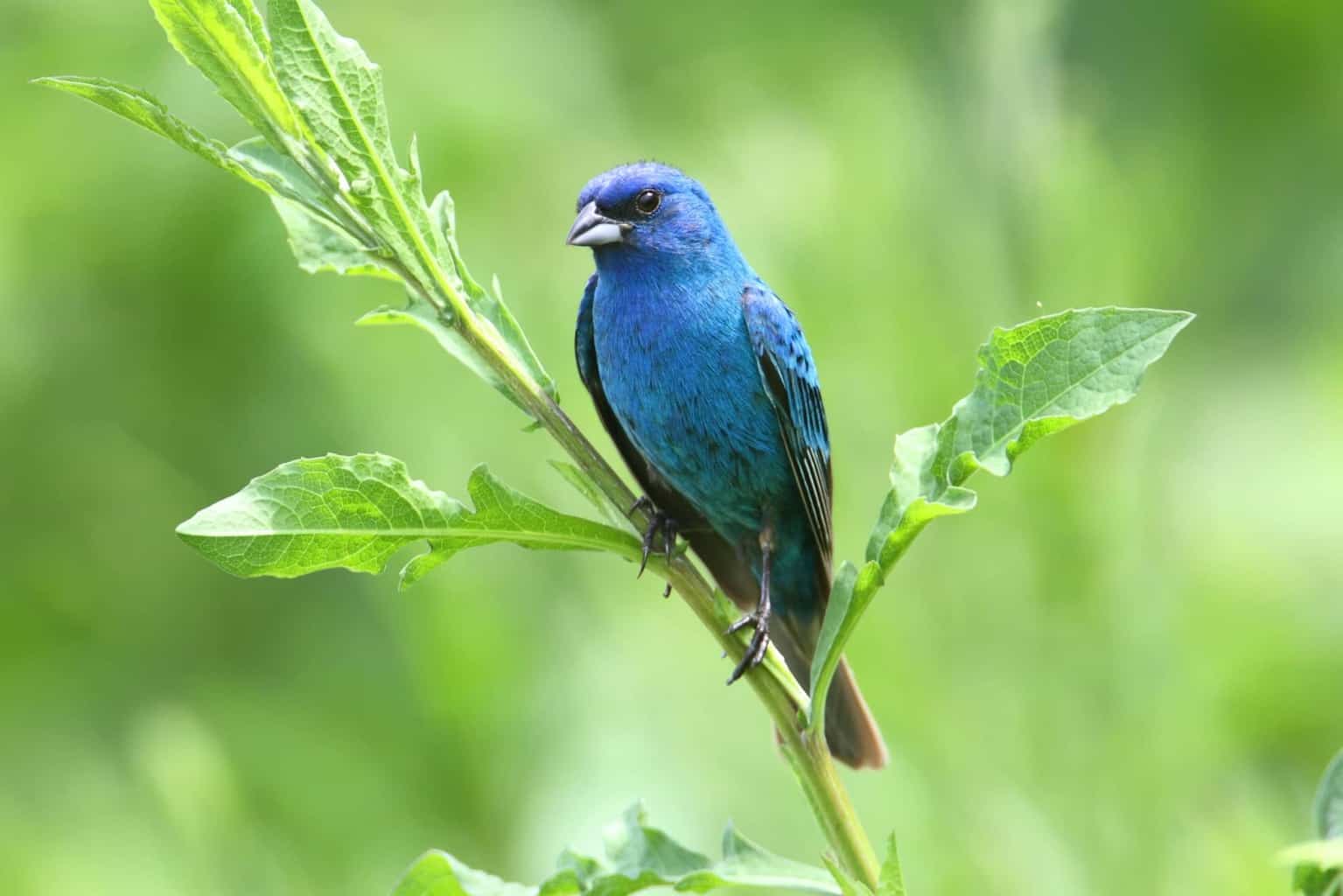
- Length: 4.7-5.1 in (12-13 cm)
- Weight: 0.4-0.6 oz (12-18 g)
- Wingspan: 7.5-8.7 in (19-22 cm)
The indigo bunting is found breeding in some of the southwest and most of the eastern half of the US, where they are quite widespread.
Sparrow-sized songbirds, stocky and with short tails, the males are bright blue overall with a more vibrant blue on their heads.
Note that while they have blue coloration, these are much smaller than blue jays and are not relatively easy to tell apart from these other birds.
Lazuli Bunting
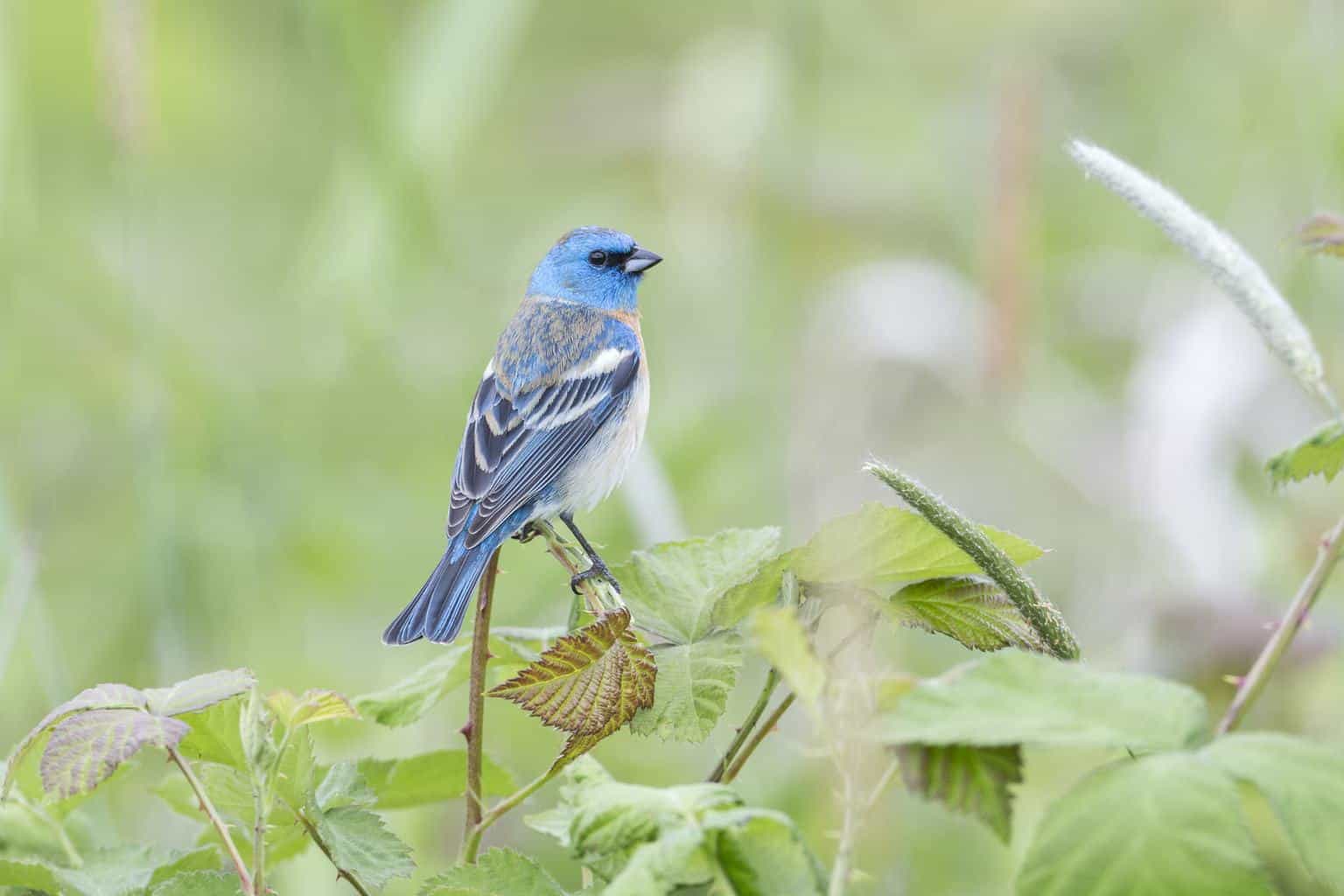
- Length: 4.7-5.1 in (12-13 cm)
- Weight: 0.4-0.6 oz (12-18 g)
- Wingspan: 7.5-8.7 in (19-22 cm)
Lazuli buntings are found across much of the western United States in summer, migrating south for winter.
The males are brilliant blue above and orangey and white underneath and have white shoulder patches.
These are another blue bird that is much smaller than the blue jay in size.
Mountain Bluebird
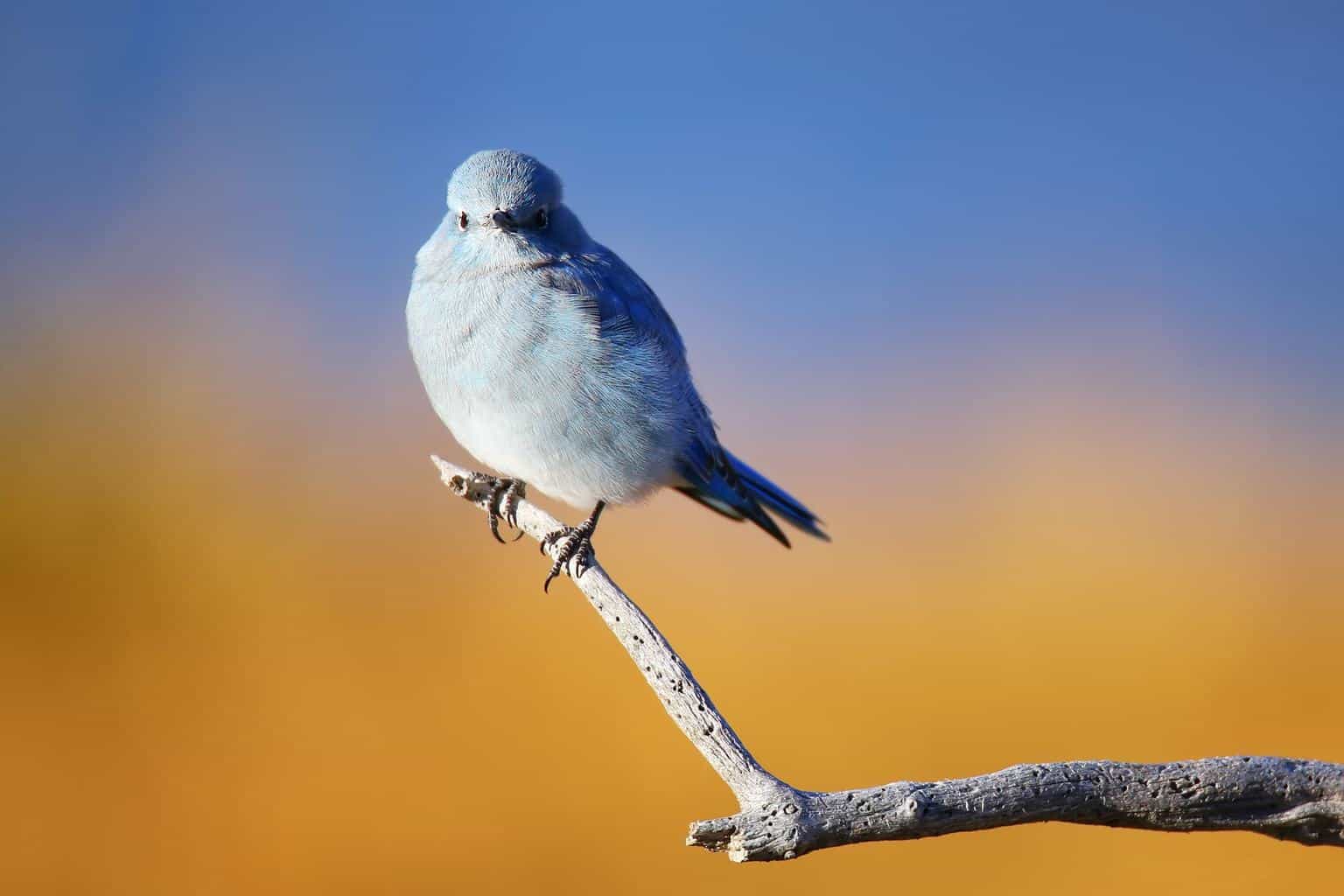
- Length: 6.3-7.9 in (16-20 cm)
- Weight: 1.1 oz (30 g)
- Wingspan: 11.0-14.2 in (28-36 cm)
Found across western North America, perching in mountain meadows or where the prairie meets forest, these bluebirds are another blue-hued bird.
The adult males are sky blue all over, darker above than they are beneath.
Note that these are blue all over and lack the patterns of the blue jay. They are also somewhat smaller in size.
White-Breasted Nuthatch
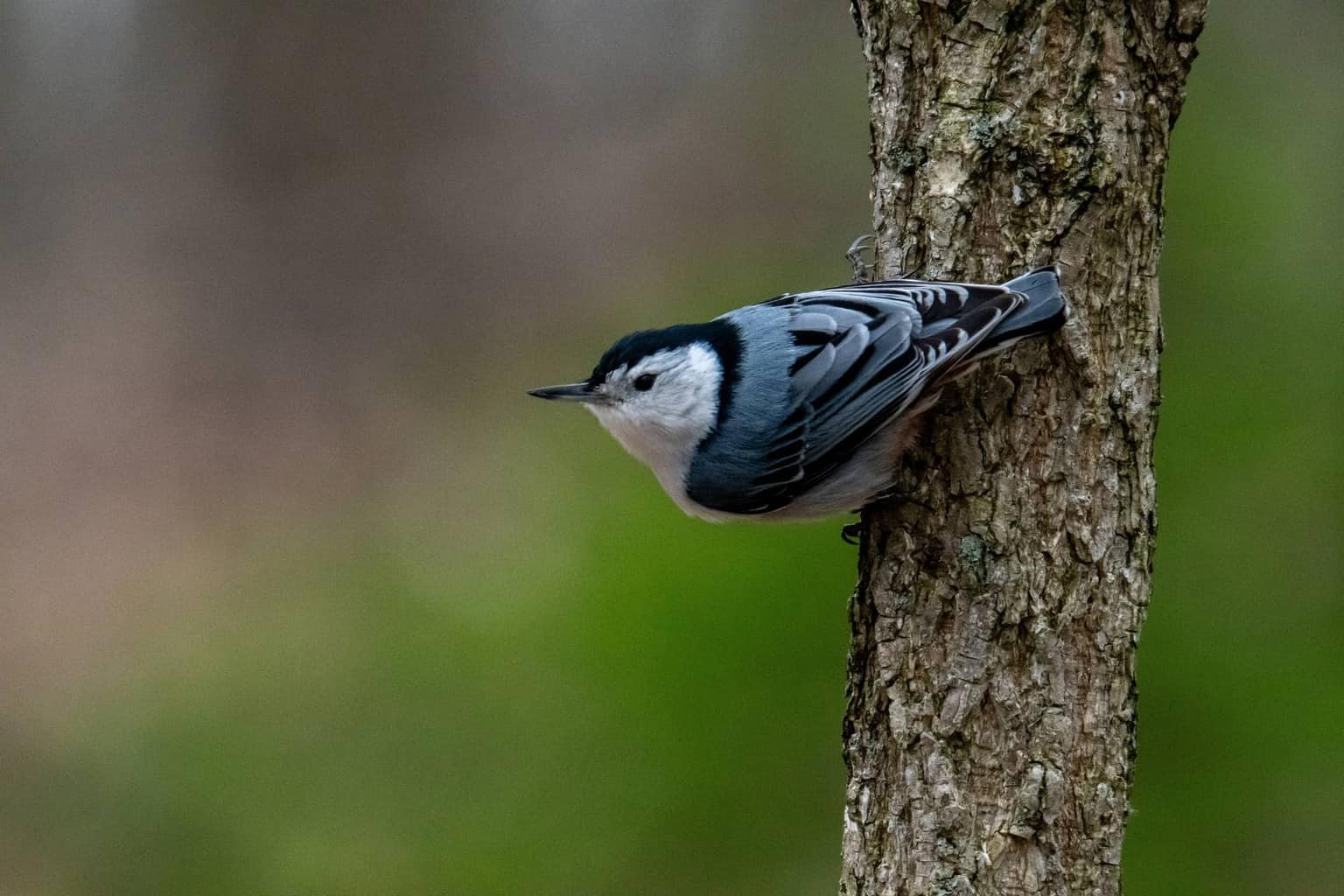
- Length: 5.1-5.5 in (13-14 cm)
- Weight: 0.6-1.1 oz (18-30 g)
- Wingspan: 7.9-10.6 in (20-27 cm)
The white-breasted nuthatch is found across most of the US, especially liking to dwell in northern woods and western mountains.
They are long-billed and short-tailed songbirds with blue-grey on their backs, white faces, underparts, and a black or grey cap.
They are not as vivid blue in hue as the blue jay, and though they have similar white faces with black markings, they are much smaller in size and really don’t look all that similar when seen up close and in good light.
But these smaller birds are sometimes confused for jays by beginners and those who just get a fleeting glimpse.

